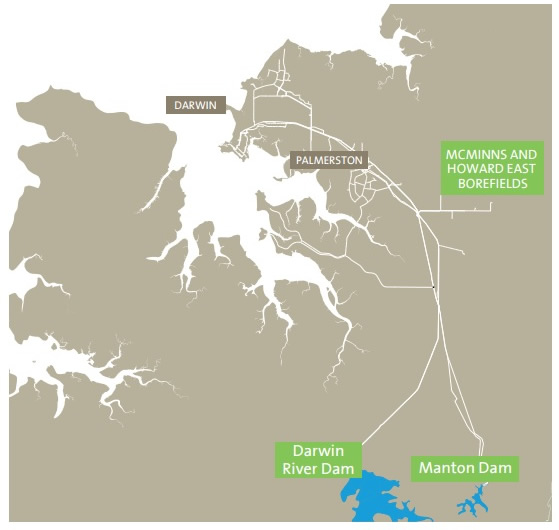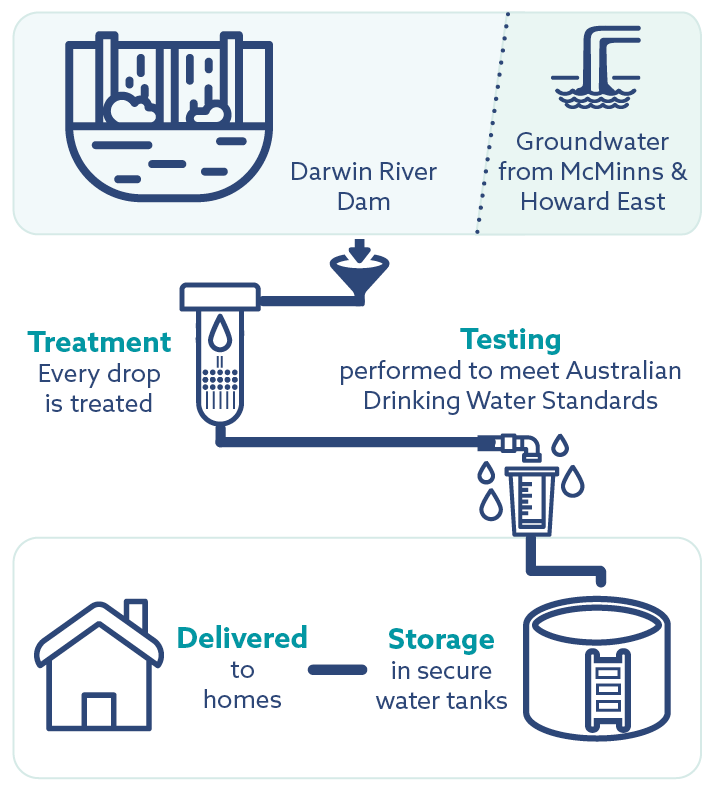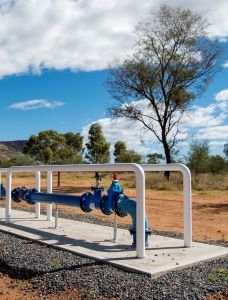Securing the Top End’s water supply
Where does Darwin's water come from?
Most of Darwin’s drinking water comes from the Darwin River Dam. The rest comes from groundwater from the McMinns and Howard East borefields.
Water from these two sources is blended and treated in line with the Australian Drinking Water Guidelines and delivered to homes and businesses in Darwin and surrounding areas.
The volume of Darwin River Dam changes throughout the year, peaking during the wet season when the most rain falls in the catchment area. We provide in-depth information about the dam, including historical storage levels, on the Darwin River Dam page.
As the Darwin region has grown, so have our water needs. In the wetter months, it can seem like we have limitless water. To secure our water supply for years to come, it’s important we conserve water where we can and increase our supply sources as our region continues to grow.

Darwin groundwater supply
Groundwater supply forms a critical component of our Darwin region water supply.
Over recent years, we have invested over $10 million to support upgrades to our infrastructure, ensuring it's efficiency and reliability.
In the Territory, 90% of the water supply comes from groundwater. Power and Water's licenced groundwater allocation has not increased since 2001.
All groundwater license applications are assessed and approved by the regulator. You can find out more about groundwater license applications on the NT Government's groundwater in Darwin rural area webpage.
Where our water comes from in the Darwin region
Duration 1:33 minutes
How your water gets to you in the Darwin region
Duration 1:23 minutes
How we use water in the Darwin region
Water in the Darwin region is used for so much more than just drinking and washing. We use 44 billion litres of drinking water each year with 41% used in homes, 24% used by Government organisations and 20% by businesses. The rest is made up of leaks, fire fighting and flushing pipes.
Darwin’s water usage is higher than similar towns around Australia.
Watering gardens accounts for over half of Darwin’s residential water use.
Leaks make up 12% of our residential water waste but can be easily repaired.
To secure the Darwin region’s water supply for the next 30 years and beyond, we are embarking on two major projects.
We treat our water to ensure it's safe to drink straight from the tap

Securing our water supply
As the Darwin region continues to grow we are working to secure the region’s water supply for the next 30 years and beyond. Power and Water is now embarking on two major projects that were identified as part of the Darwin Region Water Supply Strategy.
Once the projects are complete, the Darwin region’s water supply will be even more secure, as water will be supplied from four sources. There sources are Darwin River Dam, McMinns and Howard East borefields, Manton Dam and the Adelaide River Offstream Water Storage.
Darwin Region Water Security Update 2025
Read more about the Darwin region future water supply on the NT Government Water Security website
Duration 1:23 minutes
How we're meeting the region's water needs over the next 30 years
Manton Dam return to service
Work is underway to restore and reconnect the Manton Dam to Darwin’s water supply by 2025/26 providing a further 7,300 megalitres of water per year.
Duration 1:23 minutes
Adelaide River Off-stream Water Storage (AROWS)
The AROWS scheme involves harvesting water from the Adelaide River during the wet season and storing it in a natural geological basin in the Marrakai region.
Duration 1:23 minutes
Like everywhere else in Australia, the water supply in Darwin is dependent on our rainfall, which can vary from year to year.





